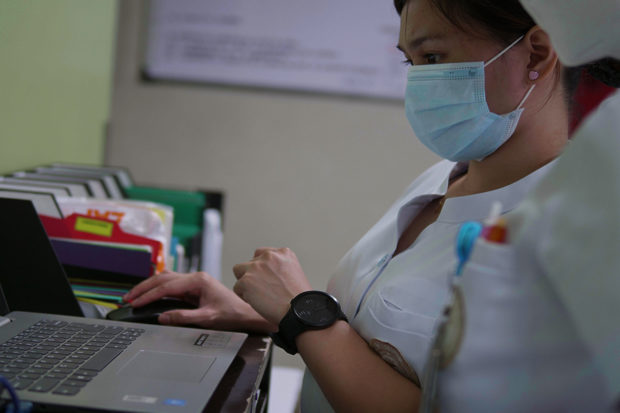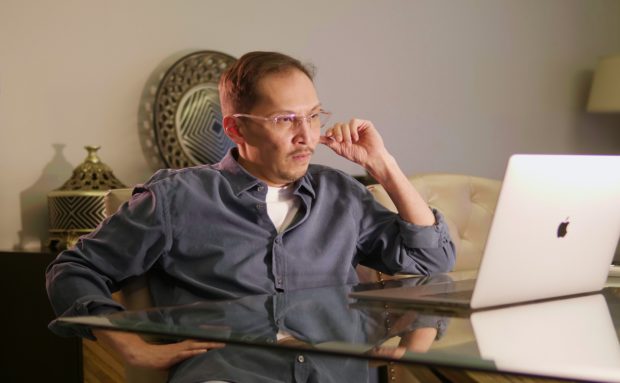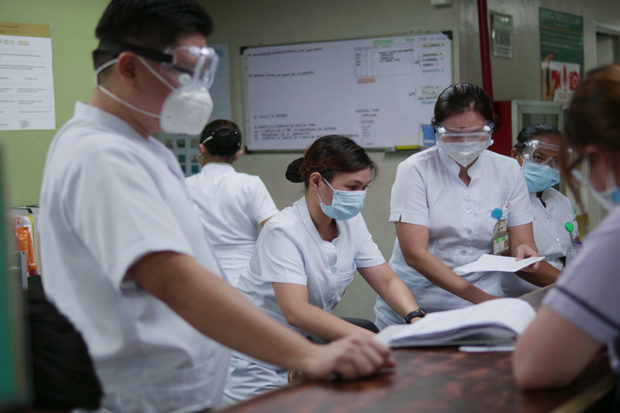‘Having a cellsite is one of the best decisions we made’ – FEU-NRMF
The Far Eastern University-Nicanor Reyes Medical Foundation (FEU-NRMF) Medical Center is just one of the many hospitals in Metro Manila at the forefront in the battle against the COVID-19 pandemic.
Since the onset of the global health crisis, the hospital has had its own share of caring for suspected, probable and positive COVID-19 patients. And just like most hospitals, the FEU-NRMF Medical Center is already at its limit when it comes to the number of patients under its care.
If there is one advantage, however, that FEU-NRMF Medical Center has over its counterparts is that it has a Globe cell tower on top of its main building.

The FEU-NRMF Medical Center not only relies on its well-trained hospital staff but also makes use of available technology, like the internet, to get instant answers from their doctors and international partners.
Nino Reyes, administrator of FEU-NRMF Medical Center, says the cell site is a key factor in providing them connectivity, information and most of all, a way to implement health protocols among their front liners, patients and their loved ones in a more patient-centric way.
“Sa pandemic natin, (with this pandemic) the cell sites are even more important. Why, because we are now practicing social distancing. We do not allow the companion of our patients to join them. So with these cell sites, we encourage them to do it through Facetime, Viber or other means of social media. So they can see what’s happening,” Reyes explained.

Nino Reyes, Administrator-FEU-NRMF Medical Center
Aside from health protocols, having access to a fast, reliable and convenient access to the internet also allows the hospital to interact with other health experts all over the world especially on the best practices in caring for COVID-19 patients.
“I think that’s the greatest decision that I was a part of because if not, we would probably be in a worst case situation right now. What if kung wala kang signal? (What if we do not have cell sites?) These cell sites afford us better cooperation and communication with the outside world,” Reyes said.
And contrary to misconceptions and wrong information about cell towers, Reyes says since the Globe cell site was put up, there has been no record or report of any medical staff or other health workers who have had cancer because of it.
“A few years ago, I was asked about allowing cell sites to be installed in hospitals because there were perceptions that people are getting cancer due to cell sites. If I’m not mistaken that was 3 or 4 years ago and thankfully, not one of our patients or any of our staff have been affected. On the contrary, it has helped so many people avoid death dahil sa mabilisang reply nung mga doctors natin (because our doctors are able to reply faster),” Reyes maintained.
“I think with this new normal, we realize that we are more dependent on this technology. Ibig sabihin, yung (it means that) doctors not involved in the frontline, let’s say a neuro or cardio doctor, they don’t need to be exposed. Frontline doctors can consult with them without the danger of getting infected. They don’t need to be physically here to treat their patients, no need to risk themselves nor add to the exponential effect of the COVID-19 pandemic,” he added.

The FEU-NRMF Medical Center is one of the busiest hospitals attending to patients of all kinds. It has introduced non-contact consultations for non-COVID-19 cases through the use of the internet which is accessible around the medical facility.
The International Agency for Research on Cancer, an agency of the World Health Organization (WHO), in 2011 placed radiofrequency (RF) electromagnetic radiation coming from cell sites BELOW the “ban” category, which is deemed safe. The WHO agency classified RF radiation from cell sites as “2B,” wherein peanut butter, pickled vegetables, coffee, and aloe vera are also included.
Moreover, the WHO has declared that cell site emissions coming from its power source as non-ionizing, meaning it can cause no harm to animal or human cells.